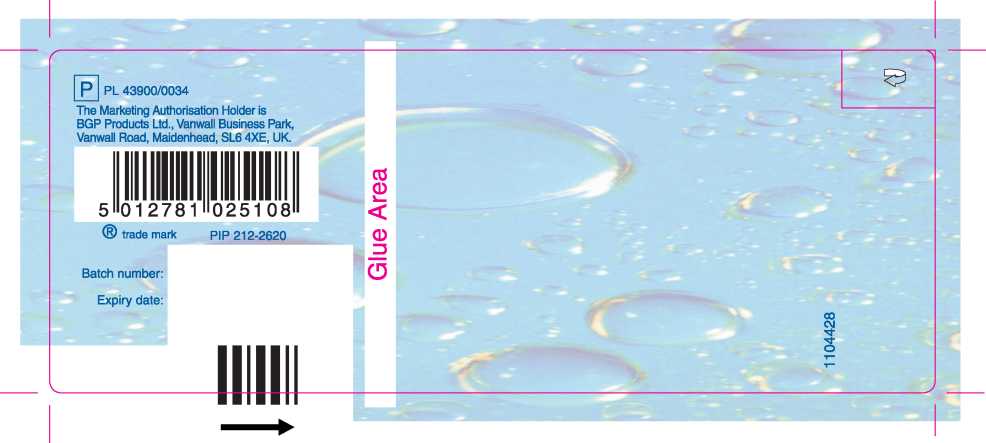Duphalac
Lactulose
SOLID 2000025208
v1.0
cn
00

Pharma code Reading direction
P. Process Black C - P. 294 C - Cyan - Magenta - - Cutting Die - Braille
PAGE 1
1104428_d2
This information is confidential
v1.0
CJi
00
3
3

PACKAGE LEAFLET: INFORMATION FOR THE USER Duphalac
3.335g/5ml, Lactulose solution
Read all of this leaflet carefully before you start taking this medicine because it contains important information for you.
Always take this medicine exactly as described in this leaflet or as your doctor or pharmacist have told you.
• Keep this leaflet. You may need to read it again.
• Ask your pharmacist if you need more information or advice.
• If you get any side effects talk to your doctor or pharmacist. This includes any possible side effects not listed in this leaflet. See section 4.
• You must talk to your doctor if you do not feel better or if you feel worse after several days.
What is in this leaflet:
1. What Duphalac is and what it is used for
2. What you need to know before you take Duphalac
3. How to take Duphalac
4. Possible side effects
5. How to store Duphalac
6. Contents of the pack and other information
1. What Duphalac is and what it is used for What Duphalac is
• Duphalac contains a laxative called lactulose. It makes the stool softer and easier
to pass, by drawing water into the bowel. It is not absorbed into your body. 3
What Duphalac is used for
• Duphalac is used to treat constipation (infrequent bowel movements, hard and dry stools).
• Duphalac is used to treat hepatic encephalopathy (a liver disease causing confusion, tremor, decreased level of consciousness including coma). This is also known as a 'hepatic coma'.
2. What you need to know before you take Duphalac Do not take Duphalac if:
• You are allergic (hypersensitive) to lactulose or any of the other ingredients of Duphalac (listed in Section 6).
• You have a rare problem called 'galactosaemia'.
• You have a blockage caused by anything else but normal constipation, digestive perforation or risk of digestive perforation.
Do not take Duphalac if any of the above apply to you. If you are not sure, talk to your doctor or pharmacist before taking Duphalac.
Warnings and precautions: *
Talk to your doctor or pharmacist before taking Duphalac if you suffer from any medical conditions or illnesses, in particular:
• if you suffer from unexplained tummy ache
• if you are unable to digest milk sugar (lactose intolerant)
• if you have diabetes
You should not take Duphalac if you suffer from:
• galactose or fructose intolerance
• Lapp lactase deficiency 4

• glucose-galactose malabsorption
If you have diabetes and are treated for hepatic encephalopathy, your dose of Duphalac will be higher. This high dose contains a large amount of sugar. Therefore, your doctor may recommend that you need to adjust the dose of your anti-diabetic medicine.
Chronic use of unadjusted dosages (exceeding 2-3 soft stools per day) or misuse can lead to diarrhoea and disturbance of the electrolytes balance.
During the treatment with laxatives you should drink sufficient amounts of fluids (approx. 2 litres/day, equal to 6-8 glasses).
If you take Duphalac for several days and there is no improvement in your condition or if your symptoms worsen, please contact your doctor.
Children
In special circumstances your doctor may prescribe Duphalac for a child, infant or baby. In these cases your doctor will supervise the treatment carefully. Duphalac should only be given to infants and smaller children if indicated as it can influence the normal reflexes for passing stools.
Other medicines and Duphalac
Tell your doctor or pharmacist if you are taking, have recently taken or might take any other medicines.
Taking Duphalac with food and drink
Duphalac can be taken with or without food. There are no restrictions on what you can eat or drink.
5
Pregnancy, breast-feeding and fertility
Talk to your doctor or pharmacist before taking this medicine if you are pregnant, might become pregnant or are breast-feeding. Duphalac can be used during pregnancy and when breast-feeding if necessary.
No effects on fertility are to be expected.
Driving and using machines
Duphalac has no or negligible influence on your ability to drive safely or use machines. Important Information about some of the Ingredients of Duphalac Duphalac may contain small amounts of milk sugar (lactose), galactose, epilactose or fructose. If you have been told by your doctor that you have an intolerance to some sugars, contact your doctor before taking this medicine.
3. How to take Duphalac
Always take Duphalac exactly as described in this leaflet or as your doctor or pharmacist have told you. Check with your doctor or pharmacist if you are not sure.
Taking this medicine
• Take Duphalac from a spoon or measuring cup.
• You can mix it with fruit juice or water. It is recommended that you drink plenty of fluids (approximately 6-8 glasses throughout the day)
• Swallow the dose immediately. Do not keep it in your mouth as the sugar content may lead to tooth decay, particularly if Duphalac is taken for long periods.
• Duphalac takes 2 to 3 days to start working.
• After this time you may be able to reduce the dose you take according to your needs.
6
Constipation
Adults and adolescents: The starting dose is 15-45ml or 1 -3 sachets per day. After this the dose can be adjusted to 15-30ml or 1 -2 sachets daily.
Children 7 to 14 years: The starting dose is 15ml or 1 sachet daily. After this the dose can be adjusted to 10-15ml or 1 sachet daily.
Children 1 to 6 years: The usual dose is 5-10ml daily.
Infants under 1 year: The usual dose is up to 5ml daily.
Use in Children: Use of laxatives in children, infants, and babies should be exceptional and under medical supervision because it can influence the normal reflexes for passing stools.
Please do not give Duphalac to children (under 14 years) before consulting your doctor for prescription and careful supervision.
Hepatic encephalopathy (adults only)
Adults: The usual starting dose is 3 to 4 times a day of 30-45ml or 2-3 sachets.
Use in Children: No information is available for treatment of children (newborn to 18 years of age) with hepatic encephalopathy.
Use in elderly patients and patients with renal or hepatic insufficiency: No special dosage recommendations exist.
If you take more Duphalac than you should
If you take more Duphalac than you should stop taking Duphalac and talk to a doctor or pharmacist.
You may have diarrhoea and abdominal pain.
If you forget to take Duphalac
If you forget a dose of Duphalac, do not worry. Just lake the next dose at the usual time. Do not take a double dose to make up for a forgotten dose. 7
87 mm
77 mm
76,5 mm
76,5 mm
77 mm
77 mm
vl.O
CJ1
00
3
3
If you stop taking Duphalac
Do not stop or change the treatment before talking to your doctor.
If you have any further questions on the use of this product, ask your doctor or pharmacist.
4. Possible side effects
Like all medicines, Duphalac can cause side effects, although not everybody gets them. The following side effects have been reported with Duphalac:
Very common (may affect more than 1 in 10 people)
• diarrhoea
Common (may affect up to 1 in 10 people)
• flatulence (wind)
• nausea (feeling sick)
• vomiting
• abdominal pain
Uncommon (may affect up to 1 in 100 people)
• electrolyte imbalance due to diarrhoea
Flatulence may occur during the first few days of treatment. As a rule it disappears after a few days. When dosages higher than instructed are used, abdominal pain and diarrhoea may occur. In such a case the dosage should be decreased.
If you use high doses (normally only associated with hepatic encephalopathy, HE) fer an extended period of time, you may experience an electrolyte imbalance due to diarrhoea. Reporting of side effects
If you get any side effects, talk to you doctor or pharmacist. This includes any possible side effects not listed in this leaflet. By reporting side effects you can help provide more 8 information on the safety of this medicine. You can also report side effects directly via the MHRA Yellow Card Scheme. Website: www.mhra.qov.uk/yellowcard
5. How to store Duphalac
Keep this medicine out of the reach and sight of children.
Do not use Duphalac after the expiry date which is stated on the carton or bottle.
The expiry date refers to the last day of that month.
Do not store above 25°C. Do not refrigerate or freeze.
Medicines should not be disposed of via wastewater or household waste. Ask your pharmacist how to dispose of medicines no longer required. These measures will help to protect the environment.
6. Contents of the pack and other information What Duphalac contains
• The active substance in Duphalac is lactulose. Each 5ml of Duphalac contains 3.335g of lactulose.
• Duphalac does not contain any other ingredients. However, it may contain small amounts of other sugars, such as lactose, galactose, epilactose and fructose.
What Duphalac looks like and contents of the pack
• Duphalac is a clear, viscous liquid, colourless to brownish yellow liquid.
• Duphalac is available in plastic bottles containing 200ml, 300ml, 500ml and 1000ml. Not all pack sizes may be marketed.
Marketing Authorisation Holder and Manufacturer
BGP Products Ltd., Vanwall Business Park, Vanwall Road, Maidenhead, SL6 4XE, Q UK. a
The manufacturer is Abbott Biologicals B.V., 8121AA, Olst, The Netherlands. This leaflet was last revised in January 2016
77 mm
77 mm
76,5 mm
P. Process Black C - P. 294 C - Cyan - Magenta - - Cutting Die - Braille
(front of folded leaflet)

11
Remember
This medicine is for you. Please do not offer it to your family and friends, even if they have the same symptoms as you.
Duphalac contains a medicine called lactulose. Each 5ml of Duphalac contains 3.335g of lactulose. 200ml
Abbott
Duphalac contains a laxative called lactulose.
Each 5ml of Duphalac contains 3.335g of lactulose. ^Duph^pc contpyis ladgp^palactose and small amounts of fructo^(all are types or sugar).
If you |^ve been told by your doctor that you cannot tolerate or digest some sugars (have an Intolerance to some sugars), talk to your doctor before taking this medicine.
Duphalac is a colourless to brownish yellow liquid. Duphalac is available in plastic bottles containing:
200ml, 300ml, 500ml, 1000ml.
Not all pack sizes may be marketed.
Read the package leaflet before use:
Keep out of the reach and sight of children.
Do not use Duphalac after the expiry date on the bottle.
Do not store above 25°C. Do not refrigerate or freeze.
This medicine is available without prescription. Duphalac is used to treat constipation. It is also sometimes used to treat a liver problem called ‘hepatic encephalopathy1.
This is also known as a ‘hepatic coma’.
1104428

76,5 mm
87 mm
PAGE 3 1104428_d2